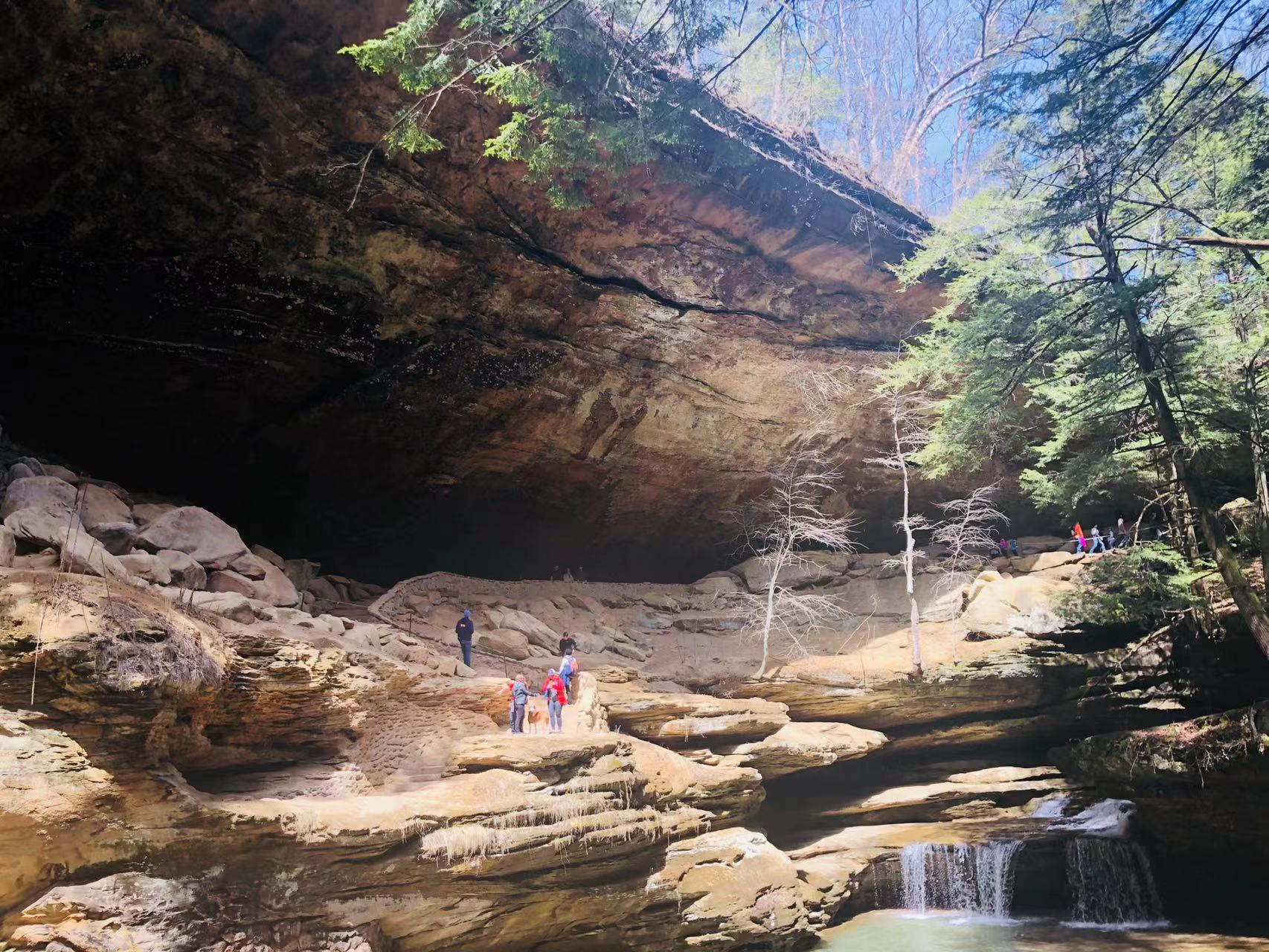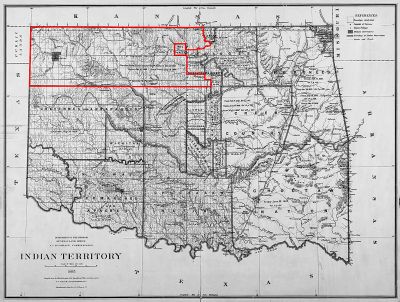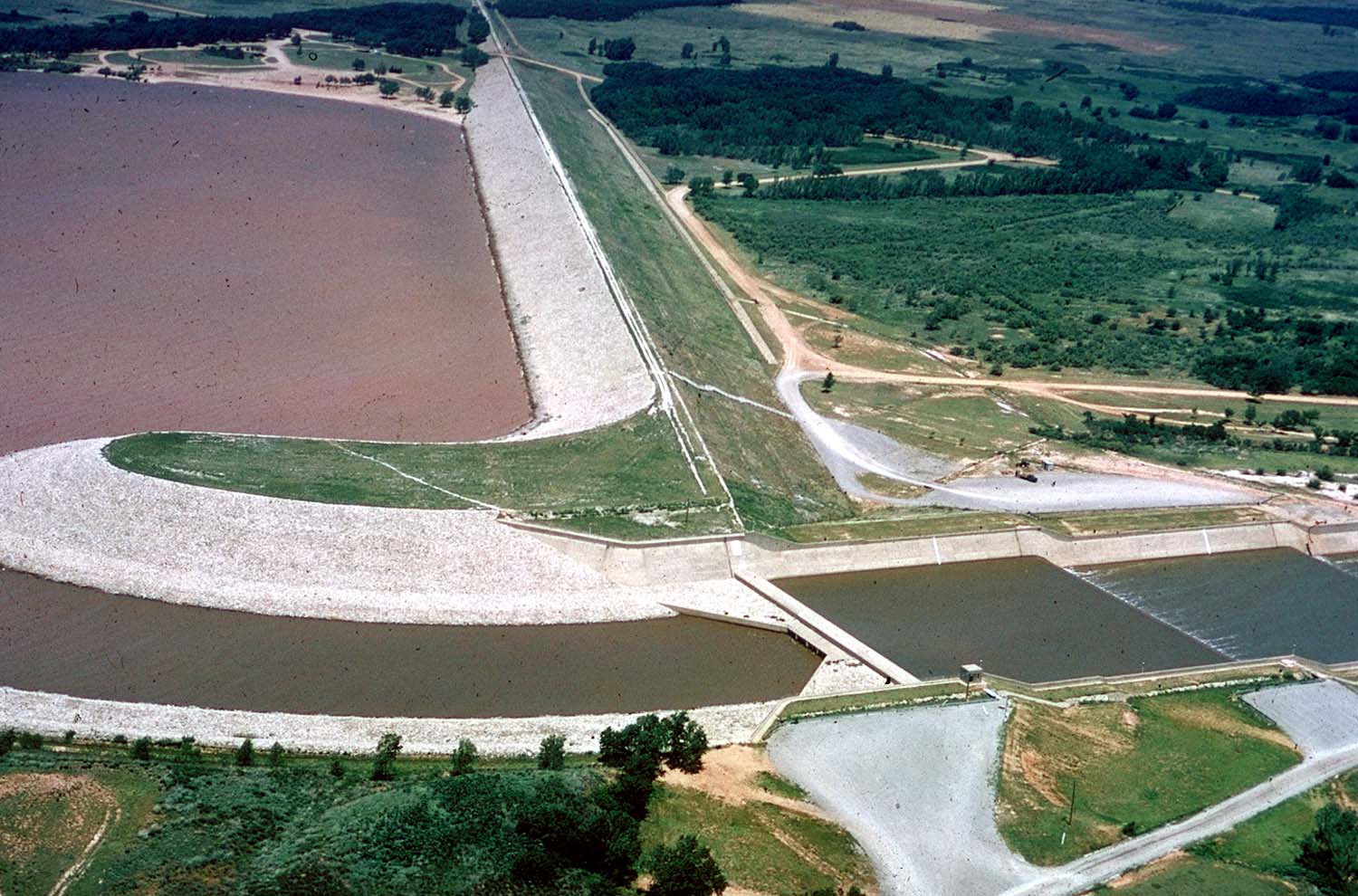|
Salt Fork Of The Arkansas River
The Salt Fork of the Arkansas River is a U.S. Geological Survey. National Hydrography Dataset high-resolution flowline dataThe National Map accessed May 31, 2011 tributary of the Arkansas River in southern Kansas and northern Oklahoma in the United States. Via the Arkansas River, it is part of the watershed of the Mississippi River. Course The Salt Fork rises in Comanche County, Kansas, and flows initially southeastwardly through Barber County, Kansas, and Woods County, Oklahoma, to the town of Alva, where it turns eastwardly for the remainder of its course through Alfalfa, Grant, Kay and Noble counties in Oklahoma, past the towns of Pond Creek, Lamont and Tonkawa. It flows into the Arkansas River in southern Kay County, south of Ponca City. In Alfalfa County, a dam on the river impounds Great Salt Plains Lake, which is lined with salt flats and is the site of Salt Plains National Wildlife Refuge and a state park. The Salt Fork's largest tributaries are the Medicine Lodge ... [...More Info...] [...Related Items...] OR: [Wikipedia] [Google] [Baidu] |
Tonkawa, Oklahoma
Tonkawa is a city in Kay County, Oklahoma, United States, along the Salt Fork Arkansas River. The population was 3,216 at the 2010 census, a decline of 2.5 percent from the figure of 3,299 in 2000. History Named after the Tonkawa tribe, the city of Tonkawa was founded in March 1894, by Eli V. Blake and Wiley William Gregory. Blake and Gregory, originally from Kansas, claimed the land that would become Tonkawa in the Land Run of 1893. Prior to the land run, from 1879 to 1885, the area was known as "Fort Oakland", home to the Nez Perce people. In 1885, the remnants of the Tonkawa tribe, who had fled Indian Territory after the 1862 Tonkawa Massacre, returned to settle in the Fort Oakland area. The Blackwell and Southern Railway (later bought by the Atchison, Topeka and Santa Fe Railway) built a line through Tonkawa, which stimulated growth of the town. In 1901, the Oklahoma Territory Legislature established the University Preparatory School (now Northern Oklahoma College) here. By ... [...More Info...] [...Related Items...] OR: [Wikipedia] [Google] [Baidu] |
Drainage Basin
A drainage basin is an area of land where all flowing surface water converges to a single point, such as a river mouth, or flows into another body of water, such as a lake or ocean. A basin is separated from adjacent basins by a perimeter, the '' drainage divide'', made up of a succession of elevated features, such as ridges and hills. A basin may consist of smaller basins that merge at river confluences, forming a hierarchical pattern. Other terms for a drainage basin are catchment area, catchment basin, drainage area, river basin, water basin, and impluvium. In North America, they are commonly called a watershed, though in other English-speaking places, "watershed" is used only in its original sense, that of a drainage divide. In a closed drainage basin, or endorheic basin, the water converges to a single point inside the basin, known as a sink, which may be a permanent lake, a dry lake, or a point where surface water is lost underground. Drainage basins are similar ... [...More Info...] [...Related Items...] OR: [Wikipedia] [Google] [Baidu] |
List Of Oklahoma Rivers
This is a list of rivers in the state of Oklahoma, listed by drainage basin, alphabetically, and by size. In mean flow of water per second, the Arkansas is Oklahoma's largest river, followed by the Red River and the Neosho River. By drainage basin This list is arranged by drainage basin, with respective tributaries indented under each larger stream's name. Mississippi River Red River *''Mississippi River (LA)'' ** Red River ***Little River ****Mountain Fork ****Glover River ***Kiamichi River **** Buck Creek ***Muddy Boggy Creek **** Clear Boggy Creek *** Blue River *** Island Bayou ***Washita River **** Wildhorse Creek ****Little Washita River *** Beaver Creek *** Cache Creek **** East Cache Creek **** West Cache Creek ***** Deep Red Creek ***North Fork Red River **** Sweetwater Creek ****Elm Fork Red River ***Salt Fork Red River ***Prairie Dog Town Fork Red River Arkansas River *''Mississippi River (AR)'' **Arkansas River ***Poteau River ****James Fork ****Fourche Maline *** ... [...More Info...] [...Related Items...] OR: [Wikipedia] [Google] [Baidu] |
List Of Kansas Rivers
This is a list of rivers in Kansas (U.S. state). By drainage basin This list is arranged by drainage basin, with respective tributaries indented under each larger stream's name. Mississippi River Basin Arkansas River Basin *Arkansas River **Neosho River *** Spring River **** Shoal Creek *** Cottonwood River **Verdigris River ***Caney River *** Elk River ***Fall River ** Cimarron River ***North Fork Cimarron River **Salt Fork Arkansas River ***Chikaskia River ***Medicine Lodge River ** Grouse Creek **Walnut River *** Little Walnut River *** Whitewater River **Ninnescah River ***North Fork Ninnescah River ***South Fork Ninnescah River **Little Arkansas River ** Cow Creek ** Rattlesnake Creek **Walnut Creek **Pawnee River ***Buckner Creek ** Bear Creek Missouri River Basin * Missouri River **''Osage River (MO)'' ***Little Osage River ****Marmaton River ***Marais des Cygnes River ** Blue River ***Brush Creek **Kansas River ***Stranger Creek ***Wakarusa River ***Delaware River ... [...More Info...] [...Related Items...] OR: [Wikipedia] [Google] [Baidu] |
Geographic Names Information System
The Geographic Names Information System (GNIS) is a database of name and locative information about more than two million physical and cultural features throughout the United States and its territories, Antarctica, and the associated states of the Marshall Islands, Federated States of Micronesia, and Palau. It is a type of gazetteer. It was developed by the United States Geological Survey (USGS) in cooperation with the United States Board on Geographic Names (BGN) to promote the standardization of feature names. Data were collected in two phases. Although a third phase was considered, which would have handled name changes where local usages differed from maps, it was never begun. The database is part of a system that includes topographic map names and bibliographic references. The names of books and historic maps that confirm the feature or place name are cited. Variant names, alternatives to official federal names for a feature, are also recorded. Each feature receives a per ... [...More Info...] [...Related Items...] OR: [Wikipedia] [Google] [Baidu] |
State Park
State parks are parks or other protected areas managed at the sub-national level within those nations which use "state" as a political subdivision. State parks are typically established by a state to preserve a location on account of its natural beauty, historic interest, or recreational potential. There are state parks under the administration of the government of each U.S. state, some of the political divisions of Mexico#States, Mexican states, and in Brazil. The term is also used in the Australian states of template:state parks of Victoria, Victoria and state parks of New South Wales, New South Wales. The equivalent term used in Canada, Argentina, South Africa, and Belgium, is provincial park. Similar systems of local government maintained parks exist in other countries, but the terminology varies. State parks are thus similar to national parks, but under state rather than federal administration. Similarly, local government entities below state level may maintain parks, e.g., r ... [...More Info...] [...Related Items...] OR: [Wikipedia] [Google] [Baidu] |
Salt Plains National Wildlife Refuge
The Salt Plains National Wildlife Refuge is part of the United States system of national wildlife refuges. It is located in Alfalfa County in northern Oklahoma, north of Jet (pop. 230), along Great Salt Plains Lake, which is formed by a dam on the Salt Fork of the Arkansas River. The refuge was established March 26, 1930, by executive order of President Herbert Hoover, and contains of protected land as habitat to about 312 species of birds and 30 species of mammals. It was designated a national natural landmark in June 1983. Refuge description The Salt Plains were a favorite hunting ground for American Indians. Bison and other game came to the area to eat the salt and the heavily wooded and well-watered area along the Salt Fork River was like an oasis in the surrounding grassland of the Great Plains. Salt Plains refuge is divided into almost equal areas of nonvegetated salt flat, open water, and vegetated land. Marshes, woods, grasslands, and croplands dot the refuge. M ... [...More Info...] [...Related Items...] OR: [Wikipedia] [Google] [Baidu] |
Salt Pan (geology)
Natural salt pans or salt flats are flat expanses of ground covered with salt and other minerals, usually shining white under the sun. They are found in deserts and are natural formations (unlike salt evaporation ponds, which are artificial). A salt pan forms by evaporation of a water pool, such as a lake or pond. This happens in climates where the rate of water evaporation exceeds the rate of that is, in a desert. If the water cannot drain into the ground, it remains on the surface until it evaporates, leaving behind minerals precipitated from the salt ions dissolved in the water. Over thousands of years, the minerals (usually salts) accumulate on the surface. These minerals reflect the sun's rays (through radiation) and often appear as white areas. Salt pans can be dangerous. The crust of salt can conceal a quagmire of mud that can engulf a truck. The Qattara Depression in the eastern Sahara Desert contains many such traps which served as strategic barriers during World ... [...More Info...] [...Related Items...] OR: [Wikipedia] [Google] [Baidu] |
Ponca City, Oklahoma
Ponca City ( iow, Chína Uhánⁿdhe) is a city in Kay County in the U.S. state of Oklahoma. The city was named after the Ponca tribe. Ponca City had a population of 25,387 at the time of the 2010 census- and a population of 24,424 in the 2020 census. History Ponca City was created in 1893 as "New Ponca" after the United States opened the Cherokee Outlet for European-American settlement during the Cherokee Strip land run, the largest land run in United States history. The site for Ponca City was selected for its proximity to the Arkansas River and the presence of a freshwater spring near the river. The city was laid out by Burton Barnes, who drew up the first survey of the city and sold certificates for the lots he had surveyed. After the drawing for lots in the city was completed, Barnes was elected the city's first mayor.Louis Seymour Barnes"The Founding of Ponca City" ''Chronicles of Oklahoma'' 35 (Summer 1957). Another city, Cross, vied with Ponca City to become the ... [...More Info...] [...Related Items...] OR: [Wikipedia] [Google] [Baidu] |
Noble County, Oklahoma
Noble County is located in the north central part of Oklahoma. As of the 2010 census, the population was 11,561. Its county seat is Perry. It was part of the Cherokee Outlet in Indian Territory until Oklahoma Territory was created in 1890, and the present county land was designated as County P. After the U. S. government opened the area to non-Indian settlement in 1893, it was renamed Noble County for John Willock Noble, then the United States Secretary of the Interior.Dianna Everett, "Noble County." ''Encyclopedia of Oklahoma History and Culture''. Retrieved October 3, 2013. History During the 18th and 19th centuries, the area now occupied by Noble County was used as a hunting ground by the Osage Indians. In 1835, a trea ...[...More Info...] [...Related Items...] OR: [Wikipedia] [Google] [Baidu] |
Grant County, Oklahoma
Grant County is a county located on the northern border of the U.S. state of Oklahoma. As of the 2010 census, the population was 4,527. Its county seat is Medford. Originally designated as part of the Cherokee Outlet, it was named County L in Oklahoma Territory at the time of its opening to non-Indian settlement. A county election renamed it for U.S. President Ulysses S. Grant. History Grant County was part of the Cherokee Nation's Cherokee Outlet until it was opened to non-Indian settlers in response to public demand on September 16, 1893. Settlers named the county after President Ulysses S. Grant in a general election held November 6, 1894. Congress originally designated this area as County L in Oklahoma Territory, with the county seat at Pond Creek. Medford became the county seat through an election held on May 27, 1908. [...More Info...] [...Related Items...] OR: [Wikipedia] [Google] [Baidu] |
Alfalfa County, Oklahoma
Alfalfa County is a county located in the U.S. state of Oklahoma. As of the 2010 census, the population was 5,642. The county seat is Cherokee. Alfalfa County was formed at statehood in 1907 from Woods County. The county is named after William H. "Alfalfa Bill" Murray, the president of the Oklahoma Constitutional Convention and ninth governor of Oklahoma. He was instrumental creating the county from the original, much larger Woods county.Dianna Everett, "Alfalfa County," ''Encyclopedia of Oklahoma History and Culture''. Accessed January 19, 2016. History Early history |




